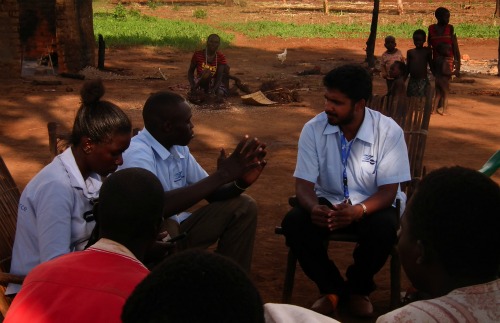I spent this summer at Peace Direct, researching peacebuilding evaluation in Sudan (note: by ‘evaluation’ I refer to both monitoring and evaluation). Evaluation is an on-going and inherent challenge for peacebuilders, and has different roles to play. I set out to find whether Sudanese conflict prevention initiatives could “prove their worth” through evaluation. My objectives were wider, though, as I aimed to develop current understanding of the wider roles of peacebuilding evaluation, and of the environment in which peacebuilding evaluators operate.
I collected data from five conflict prevention initiatives working in Sudan. I was lucky to have participants from different categories of conflict prevention initiative – an intergovernmental organisation, two international NGOs, a local NGO, and a multinational. This allowed me to compare results from organisations with different levels of local representation.
I came up with several key learning points, with both practical and theoretical implications.
So, can conflict prevention initiatives prove their worth?
To do this successfully, initiatives must deal with the 'attribution gap'- the difficulty of pinpointing the reason for success or failure of peace programmes. They do this by breaking down impact measurement into manageable chunks, in recognition of the grey areas of success and failure in the peacebuilding field (for example, whether communities were better informed about how reconciliation would impact their livelihoods).
In addition, I found the following key learning points.
Key learning points
1) Evaluation as evidence for influencing
Evaluation is one way of building evidence to influence donors and international organisations. Evaluation documentation was on the whole intended for viewing by donors, often in the donors’ prescribed formatting.
2) Wider roles of peacebuilding evaluation
As well as donors, participants listed numerous stakeholders, most significantly the intended beneficiaries and internal management. The role of evaluation vis-à-vis these stakeholders went beyond simply proving worth. Participants stressed the learning function of evaluation, ultimately aimed at improving the prospects for initiatives to contribute to peace.
3) Importance of local representation
The research supports Peace Direct’s emphasis on locally led conflict resolution. The level of local representation was found to be an important factor in initiatives' ability to work and demonstrate their value. Perhaps the most remarkable result was the fact that the local NGO research participant could continue its work in the face of violent conflict, unlike the intergovernmental organisation.
4) Accountability tension
Initiatives are accountable to a number of stakeholders. Consequently, there are potential or actual tensions between initiatives’ accountabilities (e.g. to donor vs to beneficiaries). The results indicated that the 'accountability tension' concept is intrinsic to peacebuilding evaluation, but that it can be negotiated successfully.
5) Theoretical implications
- The results supported common criticisms (such as Duffield’s) of liberal peacebuilding in two ways. Firstly, peacebuilding evaluation was found to support a system based on Western cultural values. Secondly, research participants backed evaluation methodologies that were culturally sensitive to local cultures, such as participatory evaluation.
- The results supported established work on the connections between different levels of conflict (i.e. between what Stathis Kalivas calls micro and macro levels), and showed that these connections between different levels of conflict are also relevant for conflict prevention work.
- By combining (i) and (ii), the results illustrate how peacebuilding contributes to the dissemination of the Western cultural paradigm: peacebuilding evaluations demonstrate the value of interventions, using theories of change that demonstrate the transfer between micro and macro levels of conflict prevention.
6) Future guidance on peacebuilding evaluation
The results support the adoption of universal guidance on peacebuilding evaluation across the peacebuilding field. Such guidance should be non-prescriptive, culturally sensitive, and acknowledge the accountability tension. I found that the OECD’s guidance on peacebuilding evaluation (currently under consultation) represents a problematic option for this as it runs the risk of being viewed with suspicion, given it is produced by a donors’ body. Instead, I suggest that guidance should be developed through a field wide process, as per the recent USIP and Alliance for Peacebuilding reports.
Implications for practitioners
1) Practitioners can use evaluations to address donors’ interests, building an evidence base for influencing them.
2) It is important to recognise that evaluators face a challenge to ensure that their accountability to donors does not come at the expense of internal values or intended beneficiaries.
3) The research results provide backing for the Peace Direct emphasis on the local. They do this firstly by identifying a need for locally led programmes (as the locally led programme was able to continue despite violent conflict), and secondly by highlighting the benefits of imbuing programmes with the target community’s knowledge and understanding.
4) When planning evaluations, it is essential to recognise that every programme represents a unique evaluation scenario. The most suitable evaluation approach should be selected by considering guidance such as the OECD or Mercy Corps resources, remembering to use participatory evaluation where possible.













